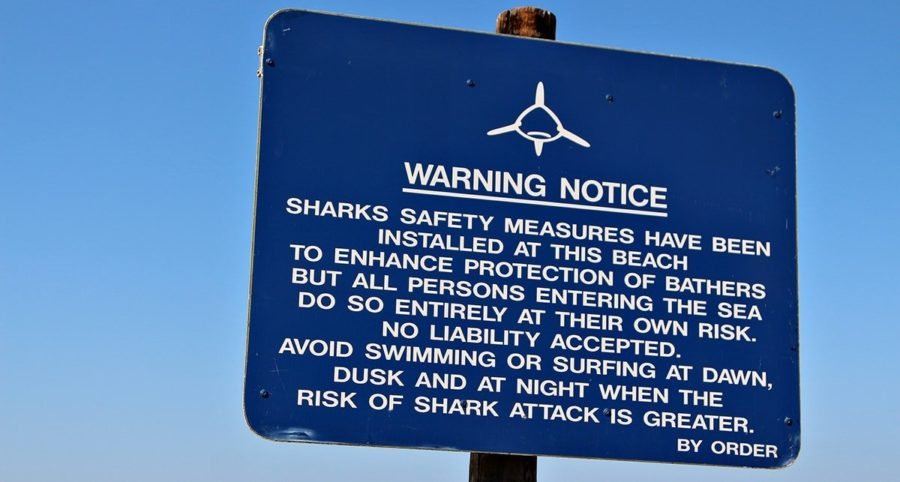The truth about shark numbers

Dr Blake Chapman
Dr Blake Chapman

HOW MANY SHARKS do we have in our waters? Are populations increasing or decreasing? These are really important questions with implications for management (environmental, fisheries and public safety), conservation and pure public interest.
The relevance of this question is particularly important for species that have been (or perhaps should be) identified as species of concern. After all, how we can appropriately manage these animals when we don’t know how many there are. But, the unpopular truth is: we simply don’t know.
Ultimately, sharks are difficult. They are unfamiliar to us and do not abide by the same rules we do. This is part of the reason they’re fascinating and their ‘wildness’ and unpredictability adds to their identity. However, it also adds a great deal of frustration to management efforts and conversations around conservation.
One of Queensland's last remaining commercial shark fishermen warns shark numbers in north Queensland are "out of control" and he is surprised there have not been far more people mauled by the animals. READ MORE: https://t.co/SRrHPYOHHt pic.twitter.com/Nhj6S9HfHl
— ABC Rural (@ABCRural) November 9, 2018
Why is it so hard to gain a firm grasp of shark numbers?
Many people feel that with the decades that have gone into studying sharks and the technological advances we see broadly in the world around us, we should have no problem gaining a firm grasp of shark numbers. But counting sharks is a complex challenge for a whole lot of reasons. Even when we narrow our questions to the few species of sharks that are particularly relevant to Australian culture, white sharks, tiger sharks and bull sharks, it does not become any easier.
These animals live across a large and unpredictable expanse of ocean, and have many regional, behavioural and ontogenetic (the origination and development of an organism) minutiae. Indeed, their regional intricacies are inherently as fluid and changing as the water itself. Some species are relatively residential, whereas others are highly migratory. Our larger sharks, in particular, generally employ a variety of movement patterns that can revolve around age, sex, experience, prey movement, environmental conditions and philopatry (the tendency of an organism to stay in or habitually return to a particular area).
Past studies have used a variety of techniques to try to count sharks and assess population trends. Two of the most common methods have included tagging and tracking, and photo identification of individuals. The issues with these methods stem predominantly from the fact that we have to find the sharks first, and then also understand what percentage of a population has been sampled (given their great capacity for movement and selective segregation). These studies are often conducted over shorter terms, and are, therefore, subject to anomalous data points and seasonal/annual variability.
Other methods that have been used to estimate trends in population size have assessed long-term fisheries and shark control program data. These are good in that they capitalise on data over decadal scales, so variation is integrated within, but does not inappropriately skew, the findings.
A recent study based on data from the Queensland Shark Control Program found that there have been substantial declines (74-92 per cent) in catch rates of hammerhead, whaler, tiger and white sharks over the past 50 years. This includes a 92 per cent decline in the catch rate of white sharks, despite their protected status over the past two decades. Ironically, despite this protection, they are still allowed to be actively targeted in every lethal shark control program in Australia. In fact, the shark meshing program in New South Wales is listed as a Key Threatening Process to white sharks, and the recent statistics give weight to the idea that these control programs could be having a significant impact on shark numbers.
Although run over substantial timeframes, studies that rely on shark catch rates could still be biased by changes in shark movement or behaviour, reporting reliability or operational variability. We also have no idea if sharks can learn to avoid nets, drumlines or other fishing methods, which would be seen as a decline in catch rate.
Humane Society International v the Great Barrier Reef Marine Park Authority and Queensland Department of Fisheries – January 30, 10AM at the Administrative Appeals Tribunal, Brisbane. https://t.co/ZsVPdHqX58
— HSI Australia (@hsiaustralia) January 17, 2019
The future of quantifying shark populations
A team led by CSIRO researchers recently developed a world-first technique for quantifying adult sharks through genetic analysis of juveniles. They used the technique to estimate Australian white shark numbers. While the study didn’t provide us with a population trend, it did provide an essential baseline assessment for future analyses. The study found that there are (an estimated) 750 adult white sharks in the eastern Australasian population and 1460 in the south-western population.
Many recent scientific efforts have suggested that most (but not all!) shark populations are declining. Yet, most anecdotal accounts from people who are regularly on, in or around the water suggest just the opposite.
Some sharks have declined by 92% in the past half-century off Queensland’s coast: https://t.co/N0SGkaZHhj
— Extinction Symbol (@extinctsymbol) December 15, 2018
Why the discrepancy?
The main reason is that, in most cases, the viewpoint of these parties is very different. Research studies often look for sharks over a much larger area, while ocean users are reporting findings from their immediate vicinity, and this can make a huge difference. Yet, anecdotal reports are broadcast across the country, making their scale appear much greater. Local, transient surges in sightings very likely just represent moving shark populations as they overlap with major human use areas — not necessarily increasing shark populations.
While it may appear that there are more sharks, it also needs to be considered that we are allocating far more time and resources towards looking for sharks. People are also talking about shark sightings and interactions a lot more frequently and we are using the water more. Sharks could also be moving closer to shore for any number of reasons that we may, or may not, currently understand. So, although sharks are clearly being seen and talked about more, which is often interpreted as population booms, science is still suggesting otherwise.
Although scientific and anecdotal reports often differ, each are important, and deserve consideration and respect. It would be extremely inappropriate for us to enact lethal measures on highly mobile shark species based on localised anecdotal evidence alone; an acute increase in sightings is certainly not justification for culling animals or changing a species’ conservation or protection status. Sharks are an integral part of our environment and their status more broadly must be considered. Likewise, it would be irresponsible to not consider anecdotal evidence for regional (non-lethal) safety measures.

